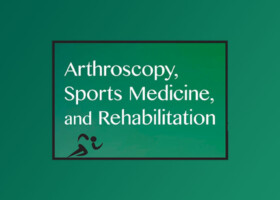
Authors:
Ernat JJ, Rakowski DR, Casp A, Lee S, Peebles AM, Hanson JA, Provencher MT, Millett PJ.
Abstract:
Purpose:
To review arthroscopic findings at the time of open Latarjet procedures to determine whether preoperative magnetic resonance imaging reports (MRRs) correlate with arthroscopic findings, as well as whether the arthroscopic findings critically affected surgical interventions performed at the time of a Latarjet procedure.
Methods:
This was a retrospective case series of all patients who received a Latarjet procedure between 2006 and 2018. Patients were excluded if they had inadequate records or underwent revision of a bony reconstruction procedure. Both primary Latarjet procedures and Latarjet procedures for revision of a failed arthroscopic procedure were included. MRRs, arthroscopic findings, and diagnoses were collected, and differences were noted. A "critical difference" was one that affected the surgical intervention in a significantly anatomic or procedural fashion or that affected rehabilitation.
Results:
In total, 154 of 186 patients (83%) were included. Of these, 96 of 154 (62%) underwent revision Latarjet procedures. The average bone loss percentage reported was 20.6% (range, 0%-40%). A critical difference between MRR and arthroscopic findings was noted in 60 of 154 patients (39%), with no difference between Latarjet procedures and revision Latarjet procedures. Of 154 patients, 29 (19%) received an additional 52 intra-articular procedures for diagnoses not made on magnetic resonance imaging, with no difference between primary and revision procedures. This included biceps and/or SLAP pathology requiring a tenodesis, debridement, or repair; rotator cuff pathology requiring debridement or repair; complex (>180°) labral tears requiring repair; loose bodies; and chondral damage requiring debridement or microfracture. Patients undergoing revision Latarjet procedures were less likely to have bone loss mentioned or quantified in the MRR.
Conclusions:
Diagnostic imaging may not reliably correlate with diagnostic arthroscopic findings at the time of a Latarjet procedure from both a bony perspective and a soft-tissue perspective. In this series, diagnostic arthroscopy affected the surgical plan in addition to the Latarjet procedure in 19% of cases. We recommend performing a diagnostic arthroscopy prior to all Latarjet procedures to identify and/or treat all associated intra-articular shoulder pathologies.
Level of evidence:
Level IV, diagnostic case series.
You can download the study:
